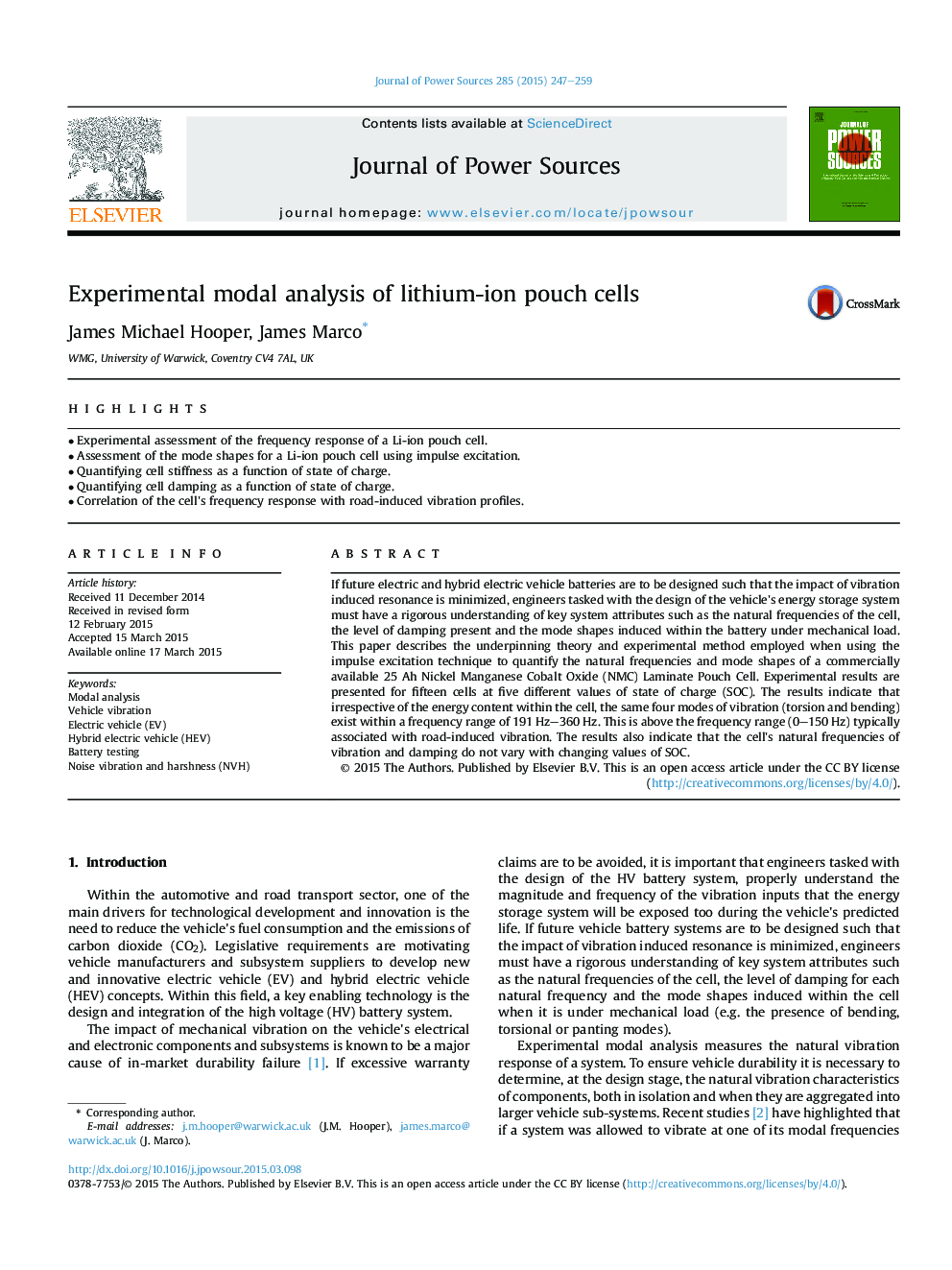| Article ID | Journal | Published Year | Pages | File Type |
|---|---|---|---|---|
| 7732693 | Journal of Power Sources | 2015 | 13 Pages |
Abstract
If future electric and hybrid electric vehicle batteries are to be designed such that the impact of vibration induced resonance is minimized, engineers tasked with the design of the vehicle's energy storage system must have a rigorous understanding of key system attributes such as the natural frequencies of the cell, the level of damping present and the mode shapes induced within the battery under mechanical load. This paper describes the underpinning theory and experimental method employed when using the impulse excitation technique to quantify the natural frequencies and mode shapes of a commercially available 25Â Ah Nickel Manganese Cobalt Oxide (NMC) Laminate Pouch Cell. Experimental results are presented for fifteen cells at five different values of state of charge (SOC). The results indicate that irrespective of the energy content within the cell, the same four modes of vibration (torsion and bending) exist within a frequency range of 191Â Hz-360Â Hz. This is above the frequency range (0-150Â Hz) typically associated with road-induced vibration. The results also indicate that the cell's natural frequencies of vibration and damping do not vary with changing values of SOC.
Keywords
Related Topics
Physical Sciences and Engineering
Chemistry
Electrochemistry
Authors
James Michael Hooper, James Marco,
